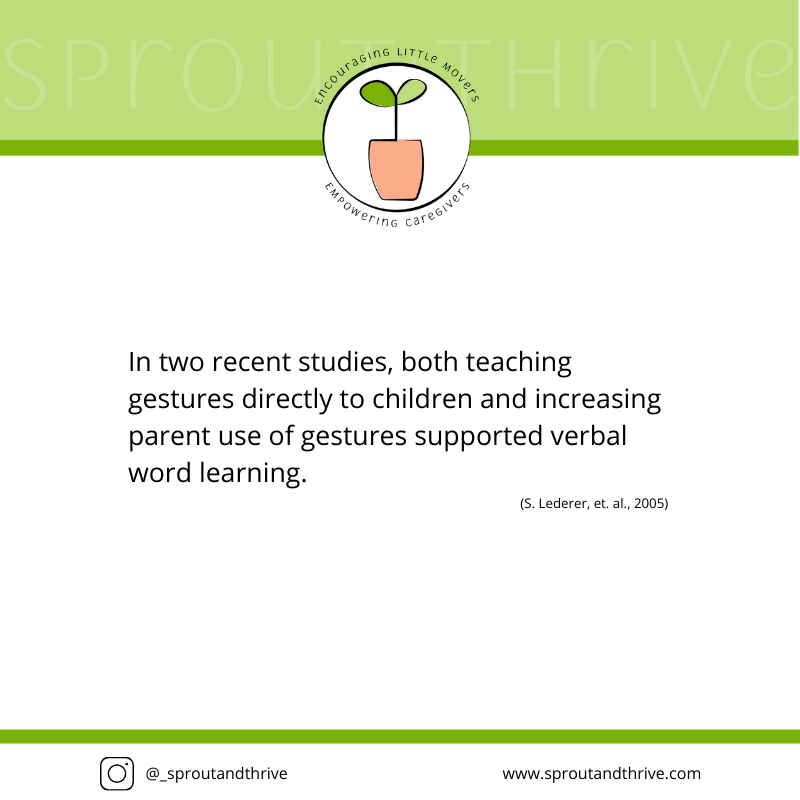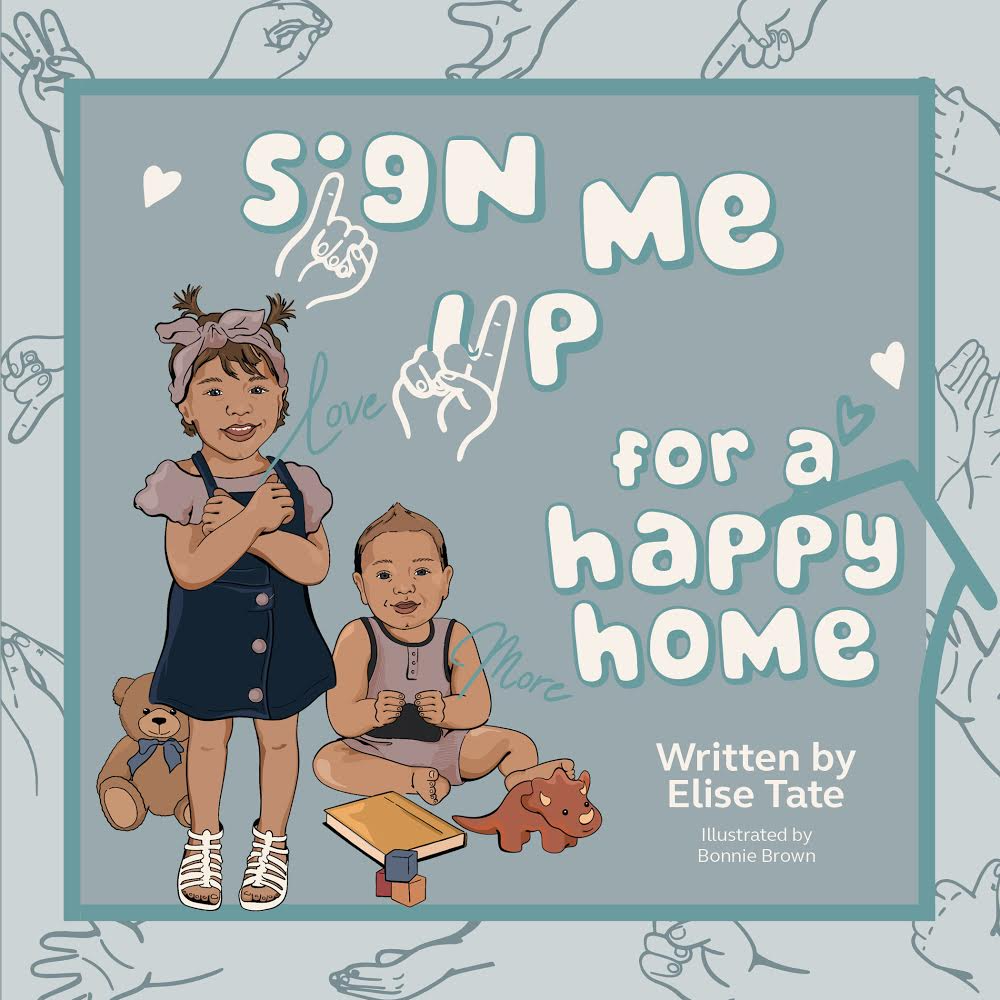Babies start communicating with caregivers the minute they are born through facial expressions, cries and body language. Caregivers and babies become in tune with each other's needs and learn what different cries mean over time.
Using sign language or gestures with a baby can often help him communicate earlier than he can by producing verbal language because imitating gestures is easier than imitating words. Using signs with a young baby is a great way to lay down a strong foundation for language skills. It allows you to purposefully engage with your child, repeat and model common vocabulary words, models turn taking in conversation, and stimulates the language centers in the brain.
Research says
Research has shown that using signs with a typically developing baby in addition to modeling verbal language DOES NOT delay spoken language skills. A study by Goodwyn,et. al. (2000) suggests that “sign training might facilitate rather than hinder the development of vocal language.” In this study, hearing infants whose parents encouraged symbolic gestures outperformed children whose parents encouraged vocal language on follow-up tests of receptive and expressive vocal language.
More exciting science on the brain benefits of signing with infants include Collingwood, 2018 “Infants who learn baby sign language also are thought to gain psychological benefits, such as improved confidence and self-esteem. Feelings of anger due to an inability to communicate may not occur as often. Having the ability to sign could be a lifesaver when a child is too distraught to speak clearly.”
Some babies can communicate through their first signs as early as 8 months, long before spoken language is a consistent form of communication. A study by Bonvillian, showed that infants exposed to sign language acquired their first signs at an earlier age than typical first spoken words. (Bonvillian et. al., 1983). Babies who sign often show increased problem solving skills and most speak earlier than those who do not sign.
Benefits of signing with baby
Baby can communicate wants/needs at an earlier age
Signing uses same conversation skills used in spoken language
Builds baby’s vocabulary at a young age
Helps develop hand skills
Activates multiple areas of the brain including language, motor, and sensory centers
Signing communication can flourish between 9-30 months and can increase the baby’s ability to communicate earlier, before they can produce a variety of spoken language (Acredolo, et. al, 1996). It can also help decrease a baby’s frustration level because he can communicate his needs. Signs are often used by toddlers in moments of big emotions (meltdowns) because physical gestures can be easier to access than verbal language in moments of intense emotion - giving you another way to calmly communicate with your toddler in the middle of a tantrum.
A new resource we love
Our friend, Elise Tate, just released her first book called Sign Me Up for a Happy Home. It’s filled with 15 starter baby signs and is full of great illustrations and written examples of how to do and remember each sign. Order it here!
“As a pediatric therapist, mother, and ASL speaker, I have to say, Elise did a great job on her Sign Me Up for a Happy Home book. It’s practical, inclusive, and easy to use. I’ll definitely be recommending it as a resource to my clients.”
-Bree Milani, Occupational Therapist &
Co-Founder of Sprout & Thrive
Why we love it
The explanations are clear and relatable to someone who has never signed
Each page includes simple tips on how to remember each sign
Great examples of how to work signs into your daily routines
Kids of all backgrounds and abilities are represented
Signs are in alphabetical order making it easy to reference during daily activities
Colorfully illustrated board book encourages baby play
Check out our full book review here and order your copy here!
In summary
Signing and gesture use helps to build language and motor centers in the brain at an early age. Signing with a baby can help increase their ability to communicate at a younger age, and can decrease frustration for both parent and baby. With a little work up-front to learn a few signs yourself, signing can be easily incorporated into routines and daily life at home. If you’re looking for a resource to get you started, we recommend the book Sign Me Up for a Happy Home as a great introduction, full of beautiful photos of basic baby signs and how-to suggestions.
Keep your eyes peeled for a future blog post on our favorite baby signs, when and how to use them, and tips and tricks for how to effortlessly incorporate them into your already busy days.
We’re Jaclyn & Bree
Pediatric therapists and moms with a mission to empower you with knowledge to encourage your baby’s development and continue confidently into your parenthood journey.
If you have any questions, please feel free to leave a comment below and we will get back to you. As always, the information we share is meant to provide general education and tips and is not intended as medical advice. If you have a specific question or concern about your child’s development, please speak directly to your child’s doctor or therapist.
Article References:
Acredolo L, Goodwyn S. Baby signs: How to talk with your baby before your baby can talk. Chicago: Contemporary Books; 1996. [Google Scholar]
Bonvillian J.D, Orlansky M.D, Novack L.L. Developmental milestones: Sign language acquisition and motor development. Child Development. 1983;54:1435–1445.
Collingwood, J. 2018, October 8. Teaching Your Baby Sign Language Can Benefit Both of You. PsychCentral. Retrieved from https://psychcentral.com/lib/teaching-your-baby-sign-language-can-benefit-both-of-you/
Goodwyn S.W, Acredolo L.P, Brown C.A. Impact of symbolic gesturing on early language development. Journal of Nonverbal Behavior. 2000;24:81–103. [Google Scholar]







